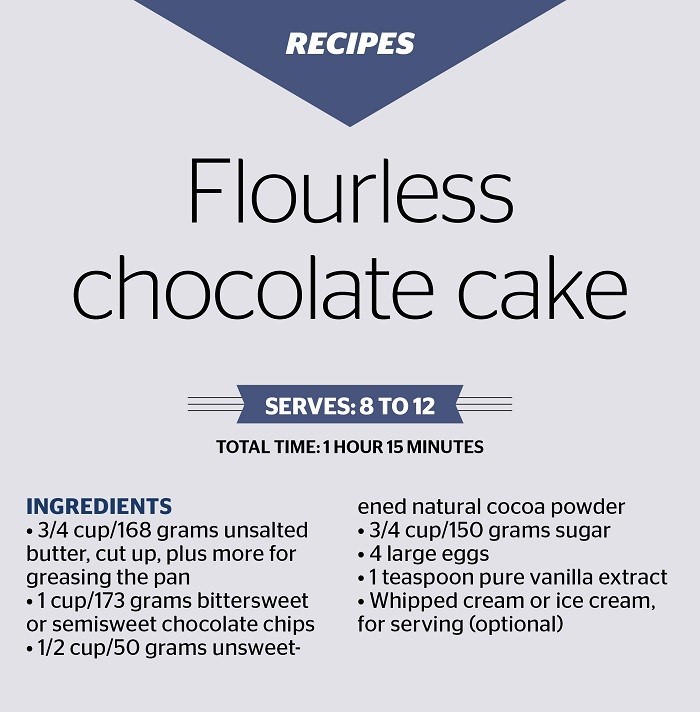It took two months for
Claudia Martínez, executive pastry chef at Miller
Union in Atlanta, to perfect her salted chocolate-chip cookie recipe. For the
morsels, she ended up using a high-end chocolate — Lactée Barry Equilibre from
French chocolate company Cacao Barry — and was happy with her results. But when
she tried some cookies that her regulars had made for her as gifts, she thought
they tasted “way better” than her own.
اضافة اعلان
They were baked with Toll House chocolate chips.
“As pastry chefs, we’re always trying to use the
fanciest chocolates,” said Martínez, 29. “Sometimes, people just want that
flavor they can recognize.” Including her. Toll House morsels were in her
mother’s cookies and in treats made by her childhood babysitter long before she
attended culinary school.
Nostalgia is only one reason to love chocolate
chips. Aside from their obvious convenience — no messy chopping — they hold
their shape better in the oven when stirred into doughs and batters, and
deliver more flavor in baked goods than some expensive bar chocolates. And it’s
all because they’re relatively low in cocoa butter and high in cacao solids.
Donald Wressell, an executive chef of
Guittard Chocolate Co., said, “At face value, sure, the most expensive chocolate is the
best,” but he emphasized that how you plan to use the chocolate should
determine what you use. “What is the right chocolate for what you’re trying to
do?”

If it’s baking, the right choice is probably
chocolate chips.
Chocolate varies widely, but most is a blend of
sugar and cocoa mass, which is made up of ground cacao solids and cocoa butter,
the fat from cacao beans. Fat carries flavor, so more cocoa butter means more
of the cacao solids’ flavor coats your tongue when you’re eating chocolate on
its own. Cocoa butter also helps temper the bitterness inherent in chocolate and
smooth both the texture and taste. So if you take a bite of a pricey bar and
then try a chocolate chip, the bar probably will taste better.
But a higher
proportion of cocoa butter also makes chocolate more fluid when it’s melted.
That’s ideal for coating confections — think shiny, snappy shells enrobing
truffles and caramel — but it is not necessary or even useful for baking, said
Jacques Dahan, president of the chocolate company
Michel Cluizel USA. In fact,
he said, “you want less cocoa butter for chocolate that you bake with.”
That’s in large part because cocoa butter is very
expensive for chocolate manufacturers, and the extra cost, which is then passed
onto consumers, isn’t worth it for many baked goods.
Cocoa butter adds fat, but
you can’t really taste it once it’s baked with other ingredients. And most
baked goods include added fat like dairy butter anyway, so the cocoa butter
isn’t necessary.
Since chocolate chips have less cocoa butter, they
have more cacao solids instead. Some chocolate chips, such as those from Michel
Cluizel, Guittard and Valrhona, keep the amount of cocoa butter low for all the
benefits of a baking chocolate, but are higher-end options with fewer, if any,
additives. In all baking morsels, the higher proportion of cacao solids yields
a lot more flavor in baked goods because “solids are where the flavor’s at,”
Wressell said. And you need stronger flavor when chocolate is blended with
other ingredients, as it is in brownies. In a flourless chocolate cake, melted
chips shine through the creaminess of butter and the richness of eggs. They
also help bind the ingredients in the absence of flour for a fudgy yet tender
texture.

When chocolate
chips are simply stirred whole into dough or batter, they showcase their most
distinctive property: their ability to hold their perky shape in a hot oven.
Because chips have more cacao solids, and the solids themselves don’t melt, the
chips stay intact enough to give structure and height to chunky cookies and
banana bread, like throw cushions in a pillow fort.
Since Nestlé began manufacturing the morsels in the
1940s — thanks to Ruth Wakefield’s invention of the chocolate chip cookie in
the 1930s — many companies have inundated the
US market with options,
especially over the past few decades. Among all the products, there is no one
best chocolate chip, only your preferred choice for any given dessert. To find
what you like, Wressell recommends not only tasting different chocolate chips,
but also baking with them.
That’s what Jacqueline Eng, head baker and co-owner
of Partybus Bakeshop in New York City, does. Because she thinks of herself as a
bread baker first, she feels like she’s experimenting when she works with
sweets. “Approaching chocolate is intimidating because you can deep dive into
sourcing beans from different countries,” she said. “Instead of being
intimidated, I decided to just make what I thought tasted good, just by trial
and error.”
After mixing different products into her cookies,
Eng landed on using Callebaut 54 percent cacao callets. But, for a stretch of
the pandemic, supply chain issues made it difficult for her to find them, so
she substituted chocolate chips from the grocery store.
Even though she didn’t prefer them, she heard positive
reviews from new customers and personally understood why. She said, “You can’t
really hand me a cookie that I’m not going to like.”
Read more Good Food



